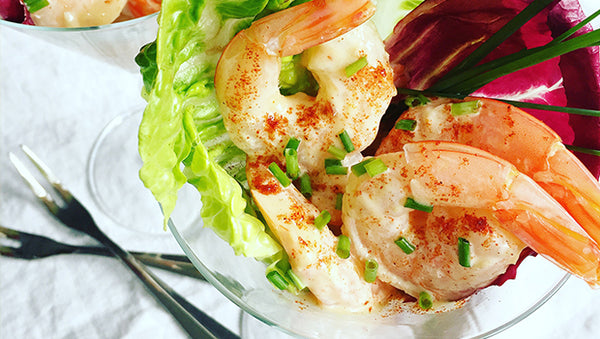Quandong (Urti) from the Flinders ranges in South Australia
Quandong is commonly referred to as Native peach. Our Quandong is wild harvested from the Flinders Ranges in South Australia. It reminds Damien of home! Quandong has a sweet and sour peachy flavour with a hint of aniseed.
Also known as the Native Peach, the Quandong is probably one of the more common Indigenous ingredients in our pantry today, and it also happens to be an icon in the Flinders Ranges where Damien is from. Known as urti in parts of South Australia and bidjigal in parts of Victoria, you can always look forward to their season, and to seeing what colours they come in – from bright pink to dark pink and ruby red. We’ve also heard stories of “ghost quandong”, which are pure white.
It’s a popular fruit for its tartness but is also widely prized for the large seed/kernel inside, which is sometimes used decoratively to make jewellery. The kernel is delicious – it tastes like an almond — and is highly medicinal. Quandong is also known as wolgol in Noongar (south-western WA) and as kurti in Nukunu (Yorke Peninsula, SA).



◎ Common Name: Quandong, Wild Peach, Urti
◎ Scientific or Latin Name: Santalum acuminatum
◎ Comparison: Sour Peach with a hint of aniseed.
◎ Seasonality: All year dried, all year frozen
◎ Region: Flinders Ranges, South Australia
◎ Taste Profile: The flesh of a mature Quandong has a yellow to red colour, dry texture and tart taste. It is described as slightly sour and salty with its sweetness varying significantly between trees. Its aroma is likened to dry lentils or beans with earthy, fermented notes.
◎ Types: We offer Quandong as a freeze-dried kibble. It's also available fresh, frozen or dried in halves or pieces. Occasionally found at farmers’ markets and shops in the right regions.
Dried Kibble: This is the most incredible sprinkle to all of your breakfasts, salads, veggies and deserts.
Benefits
- Contains twice the Vitamin C of an orange.
- A wonderful source of Vitamin E, folate, magnesium and calcium.
- A valuable vegetarian/vegan source of iron and zinc.
- A rich source of phenolic-based antioxidants which boost the immune system, reduce inflammation and protect against a number of diseases including cancer, cardiovascular disease and Alzheimer’s disease.
- The kernel contains a range of complex oils and is recognised for its antibacterial and anti-inflammatory qualities.
- Contains Rutin, a strong antioxidant that can reduce the proliferation of free radicals. Rutin works with Vitamin C to strengthen capillaries, reduce dark circles under the eyes and strengthen the skin from the affects of aging.
Uses
Aboriginal Food & Traditional Use
Traditionally a significant food source for Indigenous Australians, the Quandong or ‘Wild Peach’, features heavily in Aboriginal mythology across the desert regions of Australia.
Amongst Australian Aborigines Quandong's are valued for their medicinal properties, and can be used in the following ways:
- A form of tea which can be drunk as a purgative
- The treatment of rheumatism
- Topical ointmnets and oils for skin irritations & disorders
- Hair conditioning oil
These glossy, bright, crimson fruits have been a staple for the Pitjabtjara people for over 50,000 years. Whilst the Quandong was considered a wonderful substitute for meat, the leaves and bark of its tree were used for ceremonial and medicinal purposes. On hunting trips, Pitjabtjara men would seek out Quandong trees, consume the fresh fruits for energy and fill their coolamon wiris (dishes) with a supply of Quandong that they could dry and store for use when meat was in short supply.
Western & Modern
During the past 30 years the Quandong has become a firm favourite of Australia's burgeoning bush food industry. Commercial Quandong plantations are now an economic reality.
Stewed, cooked, preserved, dried or raw it is one of Australia's most versatile bush foods — so versatile in fact that it can also be used to aid with foot massages or cure toothache. It can be stored in the fridge or freezer, or in an airtight container if dried. They’ll last a long time dried and will quickly plump up again when soaked.
Pick when the fruit has turned pink or red. Depending on where you live, this will be between October and March.
Quandong, the Australian super fruit, with its phenolic acids provides similar benefits to Alpha Hydroxy Acids - gently exfoliating and rejuvenating the skin. The humble little quandong’s popularity is booming as word is getting out about its amazing healing properties and nutritional value, and it's now being hailed as a wonder active in the cosmetics industry.
Medicinal
To this day, the Quandong is valued equally as a food and as a medicine in treating skin conditions and rheumatism.
Nutritional Information
| NUTRIENT | QUANTITY PER 100g |
|
Energy |
140kj |
|
Protein |
3.8g |
|
Fat - Total |
0.5g |
|
- Saturated |
0.0g |
|
Carbohydrates - Total |
0.0g |
|
- Sugars |
0.0g |
|
Sodium |
104mg |
Recipes
Quandong is featured in these recipes in Warndu Mai:
- Quandong (Urti) Native Peach Pie Recipe
- Quandong & Finger Lime Prawn Cocktail
- Aussie Native Spiced Xmas Cake

◎
Warndu Products featuring Quandong
If you love the taste of sour peach then try our Quandong spice, or in our herbal tea varieties like Quandong & Black Tea Loose Leaf Tea and Quandong & Anise Myrtle Loose Leaf Tea.



Note: The term 'Bush Tucker' and 'Bush Food' are not Warndu's preferred terms for Australian Native Ingredients or Australian Botanicals.
Images: © Luisa Brimble

